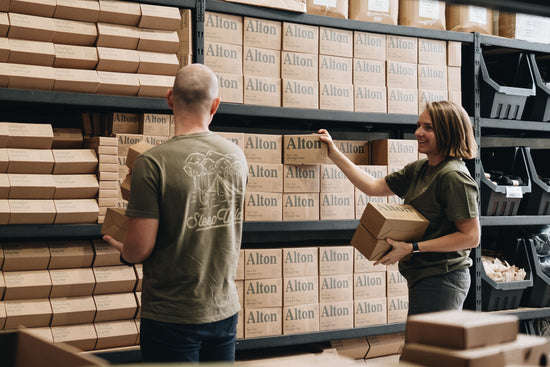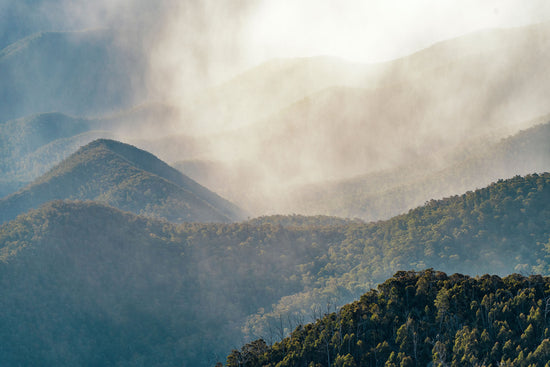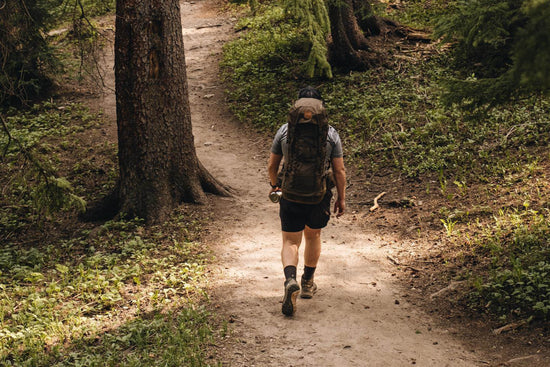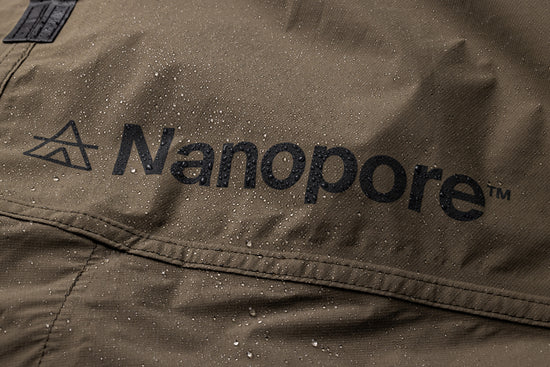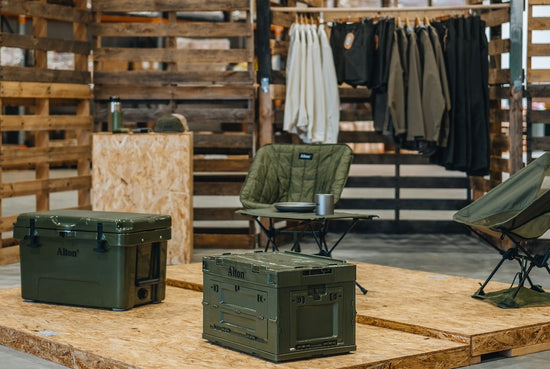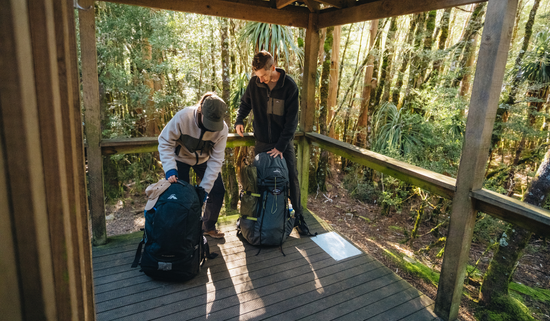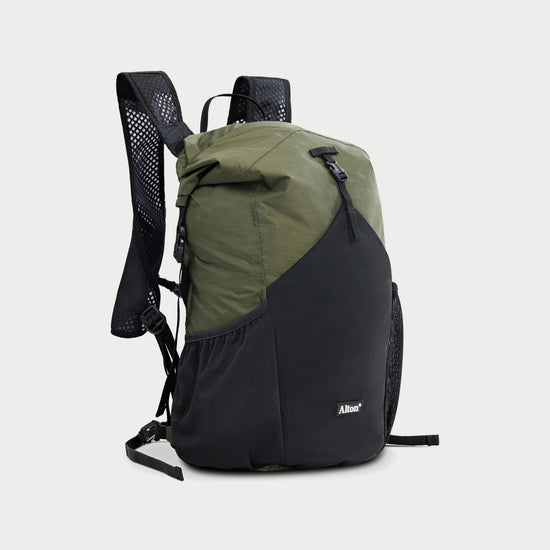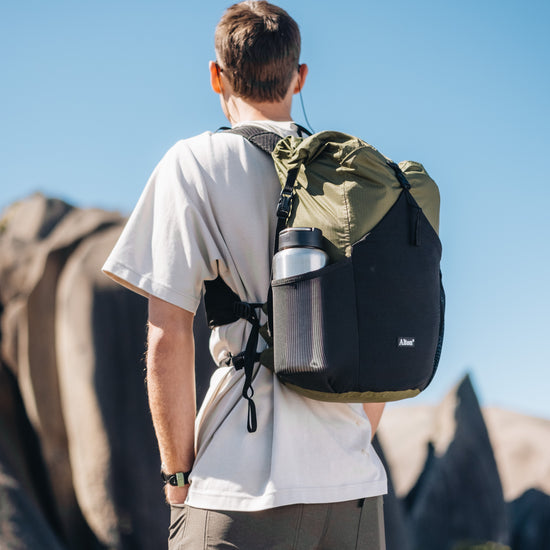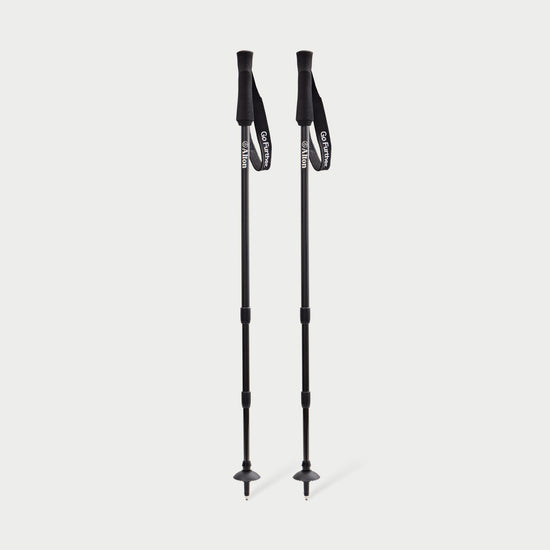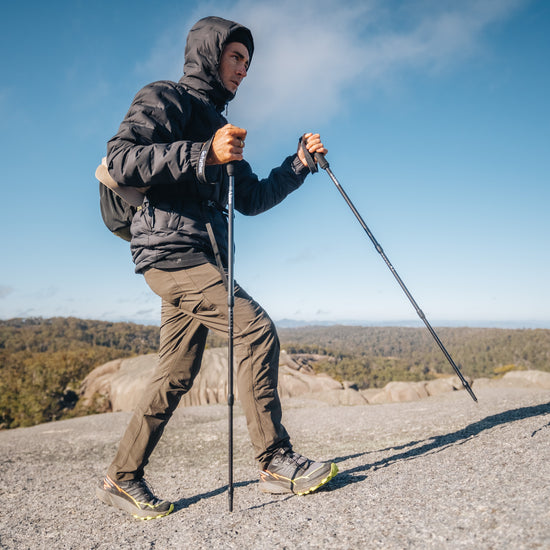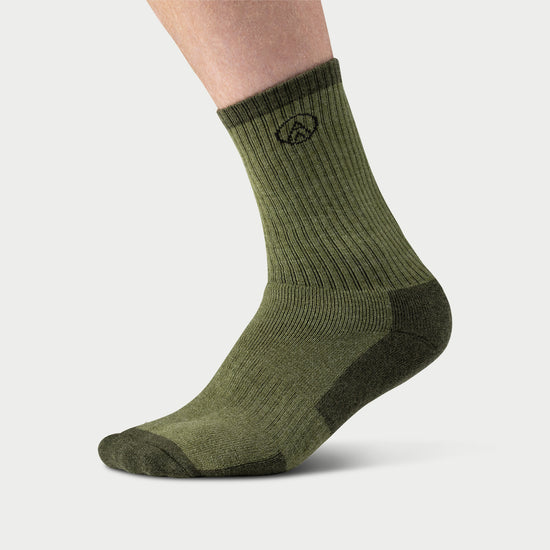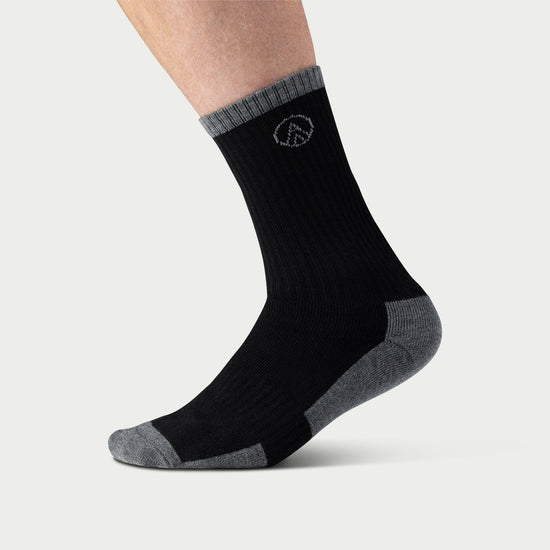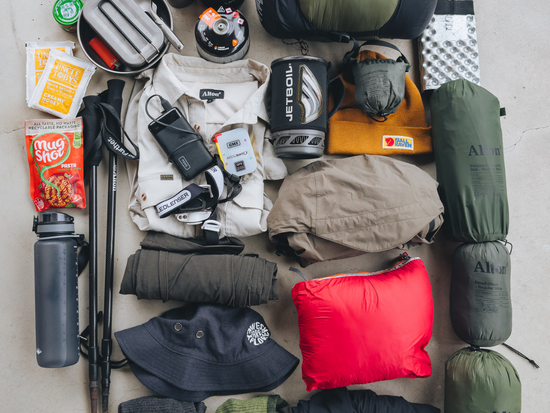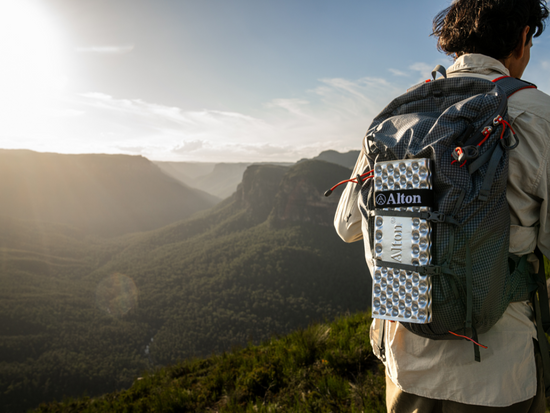When you head out into the wilderness, being prepared isn’t just about packing plenty of snacks and checking the weather forecast.
It’s about being ready to respond if something goes wrong.
But, in our experience, there is one essential that so many hikers forget about completely:
A first aid kit.
To prove our point, we asked some hikers we ran into on the trail if they were carrying a hiking medical kit or any first aid supplies.
And guess what? Only 3 out of 12 of them had basic first aid supplies with them. Ooof.
Everyone we asked told us the same thing: they’d thought about purchasing a hiking first aid kit, but they weren’t sure if all the items were actually useful, so didn’t want to drop their hard-earned money on supplies that they might end up never using.
They all agreed that having a hiking first aid kit was important… but they felt so safe on the trail that they just put off getting one, and then eventually forgot about it altogether.
Now, this is just anecdotal evidence, but it does line up with a worrying global trend of hikers being unprepared and unequipped for emergency situations.
For example, in 2023 a survey of Australian hikers by AllTrails found that only 38% of hikers felt confident with basic first aid skills.
A similar study in the UK found that rescue call outs have increased by a massive 24% between 2019 and 2024. The same study found that 18-24 year olds were the most likely to need rescuing, and that rescues for this age group almost doubled over that time period.
We get it. Most of the time when we go hiking, we’re out in good weather, on a clearly marked trail, with other hikers around. Hiking feels super safe.
But that’s exactly why it’s so easy to overlook safety, including carrying a first aid kit.
The truth is, in the wilderness, minor issues can quickly turn into major problems if you’re unprepared.
So in today’s blog, we’re diving into one of the most fundamental (and overlooked) aspects of wilderness safety: what to bring in a hiking first aid kit.
You’ll learn exactly what you need in a first aid kit for hiking, and how it can be adjusted depending on the duration and difficulty of your trip, so you feel prepared, not panicked.
Because understanding wilderness first aid isn’t just about being prepared for emergencies. It’s about knowing that if something does go wrong, you’ll be equipped to handle the situation until help arrives.
Why Everyone Needs A Hiking First Aid Kit (Even On Easy Trails)
Before we get into the specifics of what you’ll need for your hiking first aid kit, it’s worth understanding why hiking can be more dangerous than you might expect.
Compared to a lot of other outdoor activities, hiking is incredibly accessible. There’s no training required, no waivers to sign, and no instructor there to check if you’re prepared.
That means if you rock up to a remote hiking track to head out for a challenging multi-day hike in jeans and a t-shirt, no one’s going to stop you.
Case in point, one of our team members did the Overland Track during the off season back in the early 2010s… For those who don’t know, the Overland is a 7 to 8 day hike deep in the Tasmanian wilderness that’s notorious for having extreme weather all year round. And back then the track itself was a LOT more rugged than it is now. About half-way through, her group passed someone hiking in jeans and casual sneakers, carrying their gear in a daypack and two plastic shopping bags in their hands. True story.
More likely than not, that person made it out alive (we hope so, anyway). But if the weather had turned unexpectedly, or if they’d slipped and fallen on a rough section of the track, or if possums had gotten into their stuff (all real things that have happened to us)...
Well, then, their face might have ended up on the news later that week in a missing person’s report.
Because even if you have the right clothing and gear and all your essential safety items, things can still go wrong sometimes. And if they do, then you need to know this: accessing emergency services or calling in a rescue team isn’t always easy in the wilderness.
Many wilderness areas have little to no network coverage, so unless you’re carrying a satellite communication device such as a personal locator beacon (PLB), you may need to go find help or wait for someone else to arrive on the scene.
Even if you’re able to raise the alarm immediately, rescue teams may take hours to reach you. Terrain, time of day, and weather conditions all play a role when the only way in is on foot or by helicopter. That means that you may be waiting a long time for help to get to you.
Plus, in many areas, search and rescue operations rely on small teams, often made up of volunteers. These individuals are highly skilled and dedicated, but their resources may be limited or stretched across a huge area.
All this means that you need to be prepared to manage on your own for a while before help arrives. And that’s exactly why having a hiking first aid kit and some basic first-aid knowledge is essential.
Everything You Need in Your Hiking First Aid Kit
Now we all agree that having a first aid kit for hiking is important.
But what do you actually need in it?
In reality, the medical supplies you need for hiking will vary depending on where you’re going, how long you’re going for, and how many people you’re with.
So, when building your hiking first aid kit, there are a couple of ways to go about it.
First, you can focus on building an individual first aid kit, also called an IFAK.
An IFAK is generally going to be small, light and customised to suit your specific needs. The idea is to pack only the most important supplies only so you’re better equipped to handle worse-case scenarios where your life is at stake.
Alternatively, for larger groups, remote wilderness missions, or certain higher risk outdoor activities (think mountaineering, mountain biking, horse riding, etc.) it’s advisable to have a large first aid kit with a more comprehensive inventory of medical supplies.
Let’s call this the ‘comprehensive’ kit option.
We recommend building a larger, more comprehensive first aid kit to start, and then use that to build smaller kits that are tailored to the specific trip or activity you’ll be doing. The quantities you’ll need will vary depending on group size.
First Aid Kit for Hiking
WOUND CARE SUPPLIES
-
Adhesive plasters (band-aids) in various sizes
-
Wound closure strips (eg. butterfly closures)
-
Large combine dressing (non-adherent)
-
Medium combine dressings (non-adherent)
-
Cohesive/self-adherent bandage
-
Emergency bandage (Israeli bandage)
-
Blood clotting (coagulant) powder or dressing
-
Medical tape
-
Antiseptic wipes
-
Saline solution (single use vials/droppers)
-
Triangle bandage
-
Mouldable splint
-
Tourniquet
-
Vented chest seal
-
Burn gel
GENERAL MEDICAL SUPPLIES
-
Disposable gloves
-
CPR face shield
-
Low-reading clinical thermometer
-
Tweezers
-
Medical scissors
-
Safety pins
-
First aid manual
PAIN MANAGEMENT & MEDICATIONS
-
Antibiotic ointment
-
Ibuprofen and/or paracetamol
-
Anti-diarrheal medication (eg. Imodium)
-
Antihistamines
-
Electrolytes/rehydration tablets
-
Personal medications
-
Medical information card
BLISTER PREVENTION & CARE
-
Moleskin
-
Sports/strapping tape
-
Hydrocolloid blister bandages
SURVIVAL SUPPLIES
-
Satellite communication device (PLB or similar)
-
Emergency blanket and/or shelter
-
Survival lighter/fire starter kit
-
Water purification system (filter or tablets)
-
Emergency ration bar or extra dehydrated meal
-
Waterproof notebook & pencil
-
Compass
-
Multi-tool
-
Whistle
SEASONAL EXTRAS
-
Antihistamine/anti-itch cream
-
Tick removal spray (containing ether)
This first aid kit packing list is intended to serve as a general recommendation only. Always consider your personal first aid requirements, including trip duration, activities, personal medical history, and weather forecast, when preparing your first aid kit.
For more personal guidance, we encourage you to reach out to a qualified first aid instructor or trained medical professional to discuss your specific first aid requirements.
How To Modify Your Hiking First Aid Kit for Different ‘Hazard Levels’
When preparing your hiking first aid kit, it’s tempting to just buy a pre-made kit and call it good.
While this is definitely better than nothing, remember that different scenarios come with different risks or hazards. Understanding the specific risks associated with your activities can help you be more prepared and ensure you bring the right first aid supplies to combat those risks.
Things like how remote you are, how far you’re going, what weather conditions you might encounter, and even who you are hiking with can change what you might need in an emergency.
Ignoring that can leave you unprepared if something serious happens. Or, as is more often the case, it just weighs you down with stuff that isn’t really essential.
And because the ‘excess weight’ of a first aid kit is one of the reasons people choose not to bring one along at all, it’s worth trying to get as specific as possible about what you actually need.
So, the first step of building your hiking first aid kit is to assess the specific hazard level of your trip/activity.
The hazard level of your trip should be based on factors such as remoteness of the location, weather conditions, season, terrain, and outdoor activity, as well as your personal medical needs and the needs of anyone else in your group. We have lumped the different hazards into three categories: low, medium, and high.
Low Hazard Scenarios
We classify low hazard scenarios as short, easy day hikes of no more than 5km along well-maintained trails in mild weather conditions. This could include other low risk outdoor activities like foraging, plant/animal identification, or bird watching.
In order for a location to be considered low risk, you should be close to help, such as park ranger stations or nearby towns, and have reliable phone coverage at all times.
The majority of injuries in these scenarios tend to be minor, although severe injuries or medical emergencies can still occur. Carrying basic first aid supplies should be sufficient, but consider keeping a more comprehensive first aid kit in your vehicle.
Moderate Hazard Scenarios
Moderate hazard scenarios may involve longer distances, with variable weather, moderately risky activities (think cycling, running, bushcraft, fast-packing, etc.), and locations that are less accessible or have limited phone coverage.
In these scenarios, the risk of sprains, scrapes, cuts, burns, hypothermia, dehydration and other heat related conditions increases. The first aid kit you carry with you should reflect this, and you may want to do a bit of extra research to understand how to use certain supplies, such as splints and emergency bandages.
High Hazard Scenarios
High hazard scenarios cover any outdoor activities in remote backcountry areas, alpine terrain, desert environments, and multi-day hikes far from medical assistance. In these conditions, weather can be extremely volatile and unpredictable, and emergency services may take hours, if not days, to reach you.
High risk activities include mountain biking, horse riding, climbing, mountaineering, and hunting. Although the risk of injury is not huge, if something does go wrong, there is a greater chance that the injury sustained would be serious and require urgent medical attention.
In these situations, it’s advisable to have some first aid training and to carry a well-stocked first aid kit with the necessary supplies to manage severe injuries until help arrives.
Group Size
Another essential factor to consider when planning your hiking first aid kit is group size.
Hiking in a group of four or more people is considered safer, but it does mean that you may need slightly more medical supplies, especially for treating minor injuries, such as scrapes, blisters, and bug bites.
It’s also a good idea to check if anyone in the group has allergies or medical conditions that may require specific items like an EpiPen or an asthma inhaler.
Packing and Storing Your Hiking First Aid Kit
For hiking trips, we use a Cordura® Gear Pouch to keep our first aid supplies for hiking, but any water-resistant bag or case will do the trick, as long as you know what it looks like and where it is in your pack.
Using a brightly coloured bag can make it easier to identify.
Pack your hiking first aid kit near the top of your pack or in an external pocket so you don’t have to dig through all your gear to find it. Make sure it’s clearly marked so you (or someone else) can identify it.
When you set off on a hiking trip, tell everyone in your group that you have a first aid kit with you and show them where it’s stored in your pack. This way, if something happens and you’re unable to retrieve it yourself, someone else can.
After each trip, take a few minutes to go through your hiking first aid kit before putting it away. Remove used items, replace anything that’s expired or damaged, and check if you need to top up any supplies.
Store the kit in a cool, dry place, ideally with the rest of your hiking gear so you don’t forget it on the next trip.
Now It’s Time To Build Your Hiking First Aid Kit (And Stop Making Excuses)
We get it – building and carrying a hiking first aid kit can feel like a lot of effort (and money) for something that might never happen to you…
Maybe you’re thinking, “I’ve hiked a bunch of times before and never needed a first aid kit – why bother now?!”.
Well, we can’t force you to carry a first aid kit when you go hiking, but this is our take: we’d rather carry a hiking first kit around trip after trip, than find ourselves in a situation where someone’s hurt, and we don’t have the basic first aid supplies to help.
Because carrying a hiking first aid kit isn’t just about protecting yourself. It’s about being prepared to assist others, too.
Think of your first aid kit as a piece of essential gear, just like your hiking boots, pack, and water bottle. It’s not about being afraid or paranoid. It’s about being capable, confident, and prepared to handle the unexpected.
And that kind of preparedness builds a stronger, safer outdoor community for all of us.
